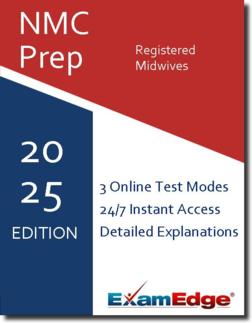NMC Registered Midwives (NMC-Midwives) Practice Tests & Test Prep by Exam Edge - Test Reviews
Based on 17 Reviews
- Real Exam Simulation: Timed questions and matching content build comfort for your NMC Registered Midwives test day.
- Instant, 24/7 Access: Web-based NMC Registered Midwives practice exams with no software needed.
- Clear Explanations: Step-by-step answers and explanations for your NMC exam to strengthen understanding.
- Boosted Confidence: Reduces anxiety and improves test-taking skills to ace your NMC Registered Midwives (NMC-Midwives).

NMC Registered Midwives (NMC-Midwives) Practice Tests & Test Prep by Exam Edge - Review
NMC Registered Midwives - Reviews
Excellent
Based on
85
reviews
“ The content of the NMC midwife test is completely irrelevant, non-evidence-based, and specific to the USA health service. I would seek a full refund. There are more nursing-based questions than midwifery. Midwives are NOT always nurses.
Jessica , Australia
“ There is nothing to add. You guys are great, Thanks so very much
Ogeri , CANTON, Massachusetts
See why our users from 154 countries love us for their exam prep! Including 17 reviews for the NMC Registered Midwives exam.
Exam Edge is an Industry Leader in Online Test Prep. We work with our Institutional Partners to offer a wide array of practice tests that will help you prepare for your big exam. No Matter how niche field of interest might be, were here to help you prepare for your test day.
| 2.8M | 4.5M | |
| Users | Tests Taken | |
| 100K | 19 | |
| Unique Exams | Years in Business | |


